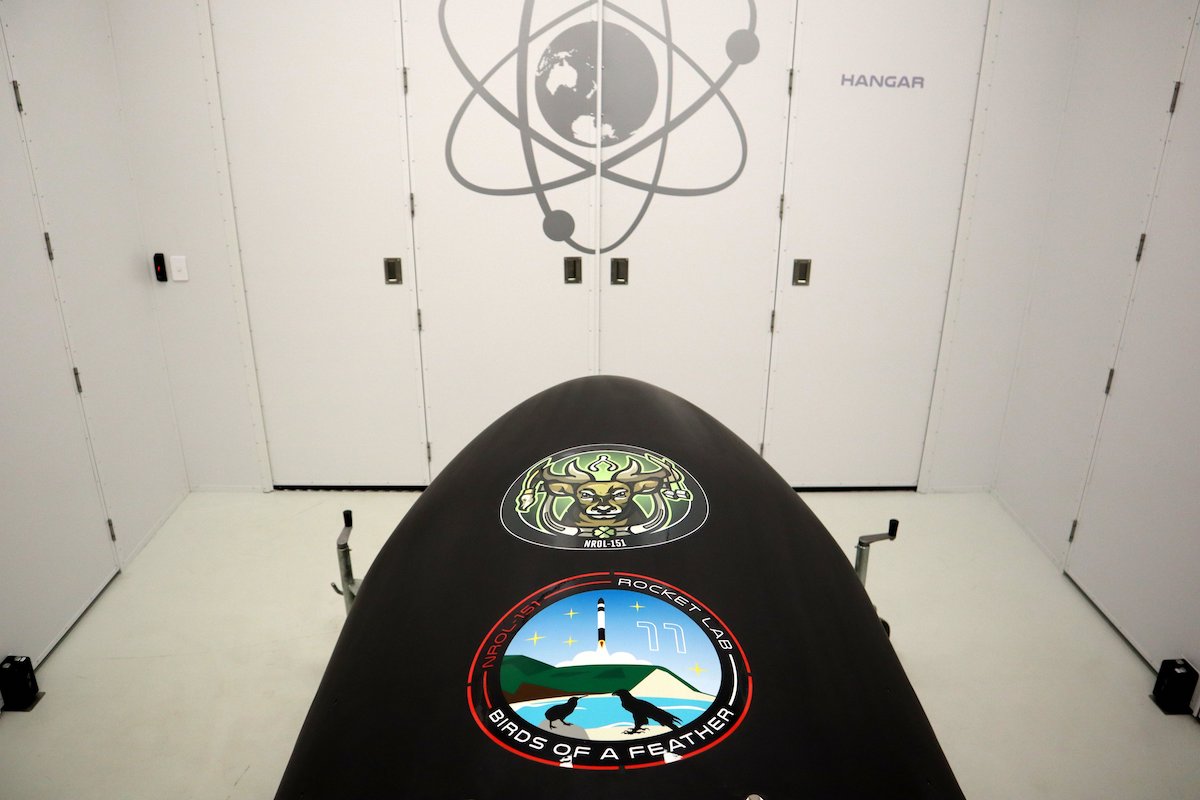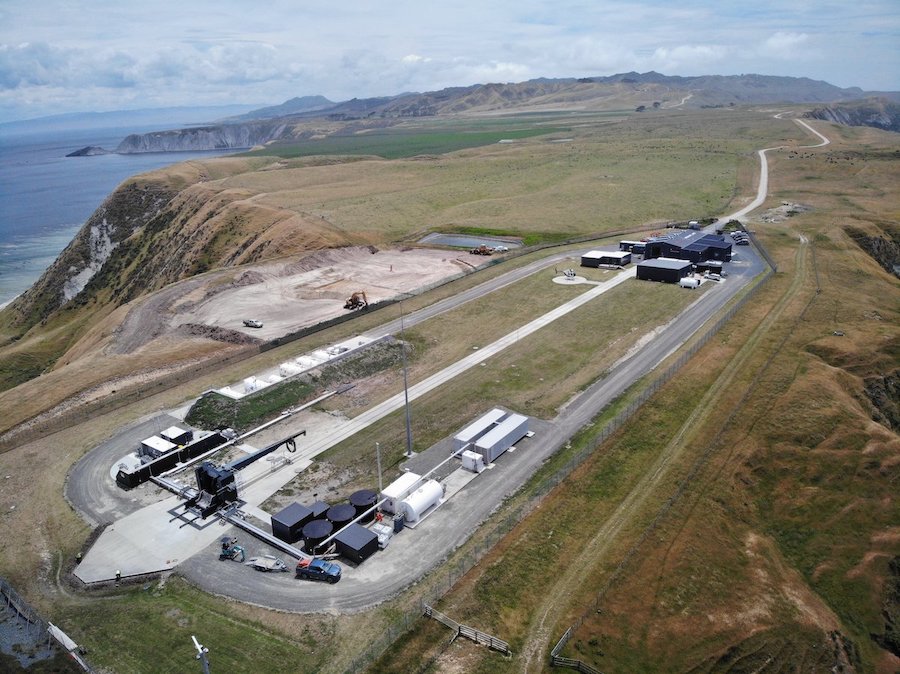
Rocket Lab’s first mission for the National Reconnaissance Office, which owns the U.S. government’s fleet of intelligence-gathering satellites, is scheduled to launch from New Zealand as soon as Jan. 30 (U.S. time), officials announced Monday.
Designated NROL-151, the previously-unannounced mission will be the first dedicated launch for the NRO from a spaceport outside the United States.
With rare exceptions, information about the NRO’s payloads is typically classified. The spy satellite agency and Rocket Lab released no details about the payload set to fly into orbit on Rocket Lab’s Electron rocket later this month.
Most of the NRO’s missions are large, requiring boosts from heavier rockets from United Launch Alliance or SpaceX. But the organization has expanded its use of small satellites in recent years, deploying CubeSats and arranging dedicated launches on smaller rockets, such as Northrop Grumman’s Minotaur launch vehicle family.
Rocket Lab’s Electron rocket provides a different launch service, offering a dedicated ride to orbit small satellites without requiring payload owners to hitch a ride on a larger rocket, which often requires operators to compromise on schedule or orbital parameters.
The Electron is designed to carry up to 330 pounds (150 kilograms) of payload to a sun-synchronous polar orbit around 310 miles (500 kilometers) above Earth. Rocket Lab — which is headquartered in California, and has a factory and a primary launch site in New Zealand — says its base price to purchase the entire capacity of an Electron rocket mission is around $5.7 million.
The NRO said the NROL-151 mission is the first launch it has procured through the agency’s new Rapid Acquisition of Small Launch, or RASR, contracting mechanism. The NRO said the small launch program “enables our exploration of new launch opportunities by providing a streamlined, commercial approach for launching smallsats.”
“Under this approach, RASR helps us pursue the use of both large and small satellites to create an integrated architecture that provides global coverage to answer a wide range of intelligence questions,” the NRO said.
The first opportunity to the launch the NROL-151 mission opens at 7 p.m. EST on Jan. 30 (0000 GMT; 1 p.m. New Zealand time on Jan. 31). A four-hour window is available daily through Feb. 12 (U.S. time), according to Rocket Lab, which has nicknamed the upcoming flight “Birds of a Feather.”

The NROL-151 mission will mark the 11th flight of a Rocket Lab Electron booster since its debut in May 2017. It will be Rocket Lab’s first flight of 2020, and the fourth dedicated Rocket Lab mission for the U.S. government.
“We are honored the NRO has selected Rocket Lab as the launch provider for this dedicated mission,” said Lars Hoffman, Rocket Lab’s senior vice president of global launch services. “The Electron launch vehicle is perfectly positioned to provide the kind of rapid and responsive access to space that puts the NRO in complete control over their own launch schedule and orbital requirements.
“As the industry shifts toward the disaggregation of large, geostationary spacecraft, Electron enables unprecedented access to space to support a resilient layer of government small satellite infrastructure,” Hoffman said in a statement.
The NRO said it was looking forward to a new partnership with Rocket Lab and a continued collaboration with New Zealand on the NROL-151 mission. New Zealand is a partner in the “Five Eyes” intelligence-sharing alliance with the United States, the United Kingdom, Canada and Australia.
Rocket Lab says it will attempt another guided re-entry of the Electron booster’s first stage after it shuts down around two-and-a-half minutes after liftoff. While the Electron’s second stage and Curie kick stage place the NROL-151 payload into orbit, the first stage will use thrusters to flip around 180 degrees and re-enter the atmosphere.
Engineers will analyze data gathered by sensors on the first stage to determine how the rocket weathers the extreme heat and pressures of re-entering the atmosphere. Rocket Lab debuted an upgraded first stage on the company’s previous launch in December, including a guidance system and thrusters to control the pencil-shaped composite booster’s orientation during re-entry, plus a base heat shield to protect the rocket during descent.
Rocket Lab will add parachutes to future rockets. The company eventually aims to retrieve the boosters using a helicopter as they descend under a parachute, enabling the company to recover and reuse the stage while avoiding contamination from salt water.
Unlike SpaceX’s larger Falcon 9 rocket boosters, Rocket Lab’s Electron first stage does not have enough leftover propellant after its ascent burn to attempt a propulsive landing. That’s simply a matter of physics, Rocket Lab says, because a small rocket inherently has thinner performance margins than a large launcher.
Rocket Lab is the first of a new crop of commercial small satellite launch companies to enter operational service. Other major players in the smallsat launcher market include Virgin Orbit and Firefly Aerospace, both of which claim they are within months of attempting an orbital launch.

Rocket Lab built a privately-owned launch site for the Electron rocket on Mahia Peninsula, located on the eastern coast of the North Island of New Zealand. The Launch Complex 1 facility at Mahia is undergoing an expansion, with construction underway on a second launch pad there.
Rocket Lab announced the completion of its first launch site in the United States — named Launch Complex 2 — last month at the Mid-Atlantic Regional Spaceport at Wallops Island, Virginia.
The first Electron launch from Virginia is scheduled this spring with a U.S. military satellite.
Rocket Lab says it built the new launch pad in Virginia primarily to accommodate U.S. government payloads.
Email the author.
Follow Stephen Clark on Twitter: @StephenClark1.



